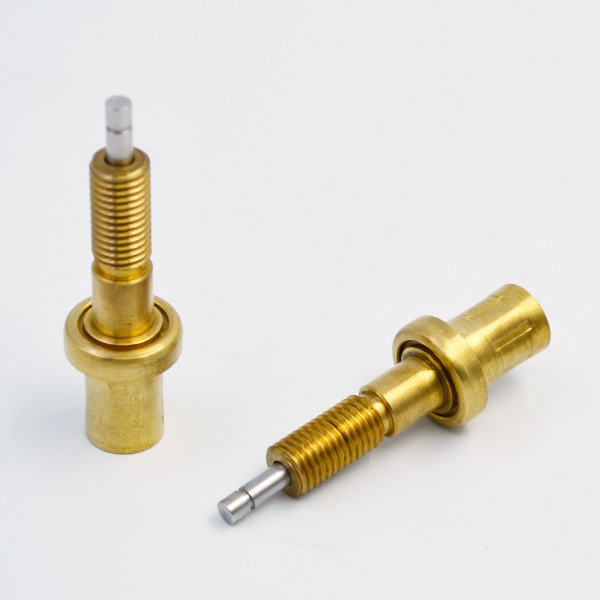The integrated design method of model predictive control ensures the stability of the system by designing a set of terminals to meet specific requirements. In this paper, a set of constraints satisfying this requirement is proposed, and then the model predictive controller is solved according to the multi-parameter quadratic programming. A controller based on the model predictive integrated control method is designed and implemented in the environment of Matlab. Finally, the stability and robustness of the controller are verified by simulation experiments. The simulation results show that the designed controller can be used to solve the predictive controller based on the integrated design method of model predictive control. In order to solve the stability problem of model predictive control (MPC) algorithm, a comprehensive design method of MPC is proposed based on the theoretical study of MPC.

The design method guarantees the stability of the algorithm by designing a set of terminal conditions, and then obtains the control law by solving the optimization problem. At present, this design method has been transferred from theoretical demonstration stage to practical application stage, and has become an important research direction in the development of predictive control. According to the comprehensive design method of model predictive control, a model predictive controller is designed in this paper. The given model is simulated, analyzed and optimized in the environment of Matlab. The stability and robustness of the designed controller are verified. The experimental results show that the designed model predictive controller can solve common problems. The basic strategy of model predictive control algorithm is to acquire control signals by rolling optimization in finite time domain.
The solving process can be divided into the following four steps: (1) predicting the output of the object in the future according to the prediction model; (2) optimizing the cost function established by the optimization algorithm to obtain a control vector; (3) modifying the first value of the control vector to the object to obtain the current output value of the object; (4) The state of the model is corrected by combining the predictive output with the current output. After entering the next sampling time, the above steps are executed circularly.
Fig. 1 shows the basic principle of predictive control. The dotted line in Figure 1 divides the internal structure of the model predictive controller into three parts: model prediction, optimal control and feedback correction. Model predictive control has no strict restriction on the specific form of each part, which promotes the wide application of predictive control in industrial process to a certain extent.

In the integrated design of model predictive control, optimal control is the most important theoretical reference system of predictive control, Lyapunov stability analysis method is the basic method of performance assurance, invariant set is the basic tool, and performance analysis with rolling time domain characteristics is the core of its research. By adding a set of terminal conditions, the integrated design method of model predictive control converts the finite-domain optimization problem of model predictive control into the infinite-domain optimization problem of optimal control, so that the stability of model predictive control can be determined by Lyapunov method.
This is the basic principle of the integrated design of model predictive control. The key problem is to design the terminal conditions to meet the requirements. The conditions that each terminal condition needs to satisfy in the integrated design of model predictive control are given below. Theorem 1: Assuming that the set of terminal constraints (f? Rn), the terminal cost function (F) and the local controller (kappa f (x) = f, x <f) satisfy the following conditions respectively, the controller determined by these three factors can make the closed-loop system asymptotically stable. F? X, thermostatic element and F is a closed region including the origin. Local controllers also satisfy input constraints. F [x, kappa f] [f,? X [f], that is, f is a positive definite invariant set under the condition of kappa F. It is a local Lyapunov function. In the formula, f (x, u) is a non-linear function: the system input and state constraints are u (k) = U? Rm, x (k) = X? Rn. In the formula, the state weighted matrix is QT=Q>0. When the performance index function is chosen as the quadratic objective function mentioned above, the terminal conditions satisfying Theorem 1 can be designed according to the following methods. The terminal constraint set chooses the feasible invariant set EP={x: xTPx < 1} of the local controller. After the above design, the finite-domain optimization performance index formula (2) can now be converted into the infinite-domain optimization performance index, as shown in formula (4). It is not difficult to understand that the terminal cost function is actually an upper bound of the infinite quadratic objective function in time domain when the placement controller is used for each state belonging to the set of terminal constraints. The multi-parameter quadratic programming method, off-line design and on-line comprehensive calculation strategy are used to solve the problem of predictive controller. This method divides the parameter space offline into several subspaces according to the state constraints of the controlled system, then obtains the control law calculation formula corresponding to the subspace according to the effective constraints in each subspace, and finally stores the solution formula of all subspaces in memory for real-time on-line calculation. Use. After entering the real-time computing stage, the subspace where the current state of the system is located should be judged firstly, and then the corresponding calculation formula should be invoked to obtain the corresponding vacancy law.
After entering the next sampling time, the on-line process mentioned above is executed by recycling. Taking the quadratic performance index (4) with constraints as an example, the process of solving model predictive control problem by using multi-parameter quadratic programming method is illustrated. In the formula, UU H-1FTx, the parameters are obtained by sum (1).
In formula (5), SE GH-1FT and the other parameters are the same as those in formula (5). The input weighted matrix R u = 0.
001 for quadratic performance index, R_ delta u = 0.0001 for input rate weighted matrix and Q = I for state weighted matrix are selected. By introducing the above model parameters and constraints into the predictive control software, the expected model predictive controller can be obtained.
Sampling time is 2 seconds, output stability vector is 2, truncation time is 1000. Under the condition of unit step signal as input, the simulation experiment is carried out under the environment of Matlab.

The output and control signals of the system change with time as shown in Figure 2. As can be seen from the above figure, the output of the system can follow the reference signal better, and there is no overshoot, no error and oscillation, and the system adjustment time is 14S. It is noted that the control input U1 reaches saturation at 2s to 12s, so the upper bound of the constraint conditions for input should be increased to maximize the system input, so as to achieve better control effect. It can be clearly seen that the control input U1 reaches a maximum of 0.25 between 4S and 6s, while the output adjustment time changes to 12s, the system can better follow the reference signal, and there is no overshoot and error. In this paper, a stable controller is designed for a specific model based on the basic idea of model predictive synthesis design method. Referring to the solving method of parametric quadratic programming, the design and Simulation of model predictive controller are carried out under the environment of Matlab, and the basic functions of model predictive controller are realized. The simulation results show that the controller can satisfy the basic function of solving model predictive controller based on multi-parameter quadratic programming.
